|
War in Paradise
World War II sites in Truk Lagoon, Chuuk, Federated States of Micronesia
Sites
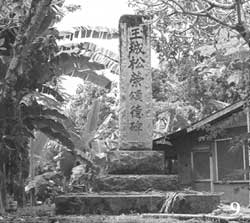 |
9. Okinawan memorial
This memorial is dedicated to TAMASHIRO SHOEI who was born in OKINAWA
and was responsible for the commencement of the tuna fishing industry in
Chuuk.
|
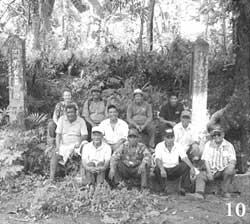 |
10. Comfort Houses
A number of comfort houses (named Tokiwa, Skoki and others) where
Japanese men could be fed, bathed and entertained by women, were
established throughout Tonoas. Different houses were established for a
different clientele—civilians, construction workers, military, and high
ranking military personnel. No Chuukese men were allowed.
|
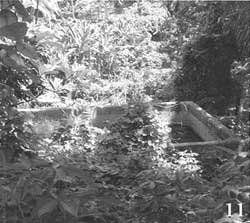 |
11. Power station and searchlight
As the Japanese road winds its way up
to the hill known as Nenengua it passes a number of buildings used to
accommodate Japanese military personnel working at the nearby
searchlight, power station, command post and guns (no. 12).
This is a photograph of some water tanks located near the power
station.
|
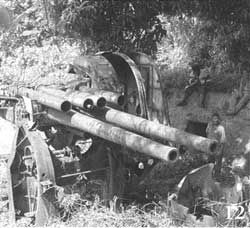 |
12. Anti-aircraft guns
Tonoas, like most of the islands in Chuuk has many guns still in their
original positions, and ranging from massive coastal defence guns
situated on hill tops and in caves, to anti-aircraft guns, to smaller
calibre machine guns. On the top of the hill known as Nenengua above
Dublon Town can be found two anti-aircraft guns and suffering from a
little post-war salvage, a third un-occupied gun emplacement, and a
command post.
|
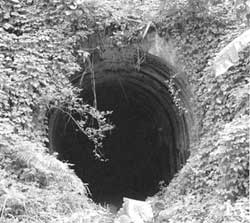 |
13. Communications bunker
This large bunker was used as the main communications base on Tonoas
during the bombing. It is over 100 metres in length and 3.35 in height
and lined with concrete. Remains of the power generators are still
located in the bunker.
|
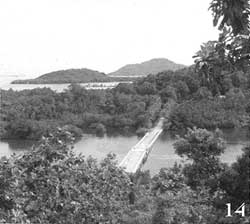 |
14. Causeway
The Japanese built this stone causeway connecting the north and south
peninsulas of Tonoas. It is over 400 metres in length.
|
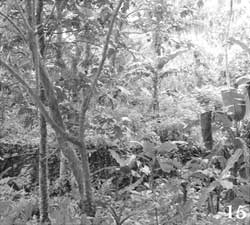 |
15. Rifle Range
A large concrete base, just south of the present
road, is the location of a rifle range used before
and during the war by the Japanese. No Chuukese
were allowed to use the rifle range.
|
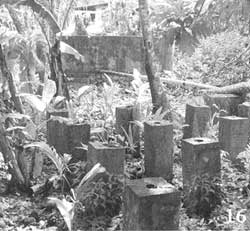 |
16. Fourth Fleet Navy Hospital
This hospital was the largest in Micronesia during the war and it
comprised a number of buildings that could treat and accommodate over
800 patients. The large series of concrete steps were associated with
the Administration building. Concrete foundations, prefabricated timber
walls and tin roofs were used for most of the Japanese buildings. With
the dismantling and reuse of the timber and tin after the war, the
foundations provide the best clues as to the original layout of the
buildings.
|

Last Updated: 01-Apr-2004
|